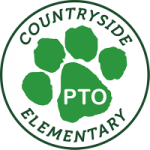 Today, Wednesday November 30th, Countryside’s 2nd graders met children’s book author Suzy Kline. Ms. Kline is the author of more than 40 books, most notably the Horrible Harry series.
Today, Wednesday November 30th, Countryside’s 2nd graders met children’s book author Suzy Kline. Ms. Kline is the author of more than 40 books, most notably the Horrible Harry series.
Suzy spoke with the kids about becoming a writer. She shared that every book starts with an idea “seed.” These idea seeds come from her every day life. Suzy was a 2nd and 3rd grade teacher for 27 years, so many of the plots in her stories started in school.
The key to Suzy’s writing has always been a small notebook that she keeps in her pocket at all times. She encouraged the students to keep a notebook, diary or scrapbook because we don’t have the time to write an entire story when things happen; but we do have time to write down one or two words that will be our idea seeds for writing when we do have the time. She showed examples of seeds she had jotted down many years ago that had become Horrible Harry books: a purple hanger and a smile made of ketchup.
Suzy explained that great stories don’t have to be long or complicated to be great. Great stories sometimes have only one sentence on each page. Great stories don’t have to be neatly written or spelled correctly at first. The important part of being a writer is just putting your words down on paper and then reading them aloud to yourself so you can hear how great your story is going to be.
Suzy also reminded the students that great writers keep reading. Many of her idea seeds came from reading other stories such as Alice in Wonderland. Sometimes characters or events in other books will inspire your own ideas for your own book.
Suzy showed the children her big folder full of rejections. She explained that rejections are when a publisher says, “No, thank you” to printing your book. She saved all 127 rejections that she received until her first book was accepted. It was a book called, “SHHHH,” and it was inspired by the fact that she said it too much one day when she was teaching. She said the rejection folder reminds her–and all of us–that writers should keep on writing and never give up.
The presentation in each class ended with a very animated question and answer session with the students.
Discussion with your child:
Q: What do you need to be a writer?
A: 1. Paper
2. Pencil
3. A quiet place to write
